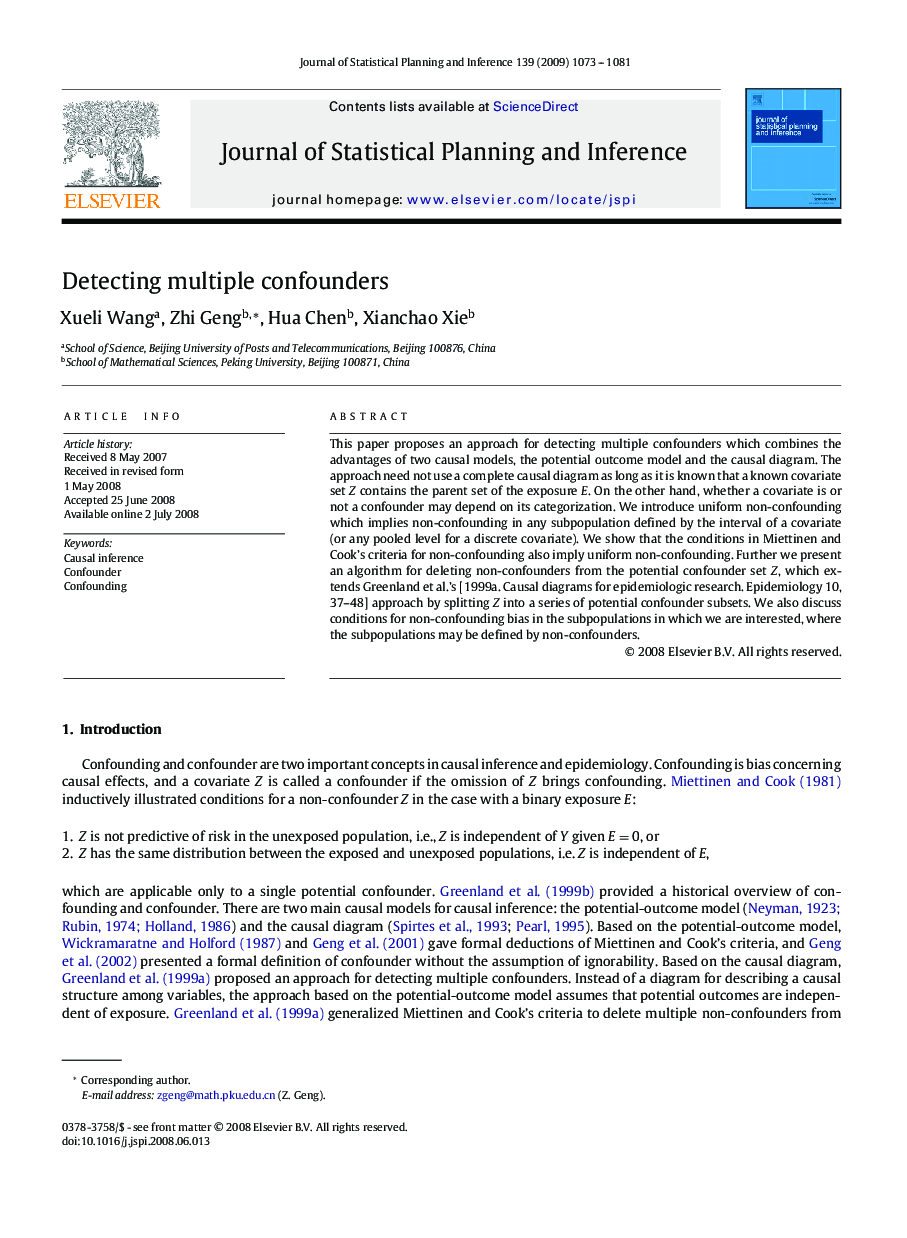| Article ID | Journal | Published Year | Pages | File Type |
|---|---|---|---|---|
| 1149793 | Journal of Statistical Planning and Inference | 2009 | 9 Pages |
This paper proposes an approach for detecting multiple confounders which combines the advantages of two causal models, the potential outcome model and the causal diagram. The approach need not use a complete causal diagram as long as it is known that a known covariate set ZZ contains the parent set of the exposure E . On the other hand, whether a covariate is or not a confounder may depend on its categorization. We introduce uniform non-confounding which implies non-confounding in any subpopulation defined by the interval of a covariate (or any pooled level for a discrete covariate). We show that the conditions in Miettinen and Cook's criteria for non-confounding also imply uniform non-confounding. Further we present an algorithm for deleting non-confounders from the potential confounder set ZZ, which extends Greenland et al.'s [1999a. Causal diagrams for epidemiologic research. Epidemiology 10, 37–48] approach by splitting ZZ into a series of potential confounder subsets. We also discuss conditions for non-confounding bias in the subpopulations in which we are interested, where the subpopulations may be defined by non-confounders.
